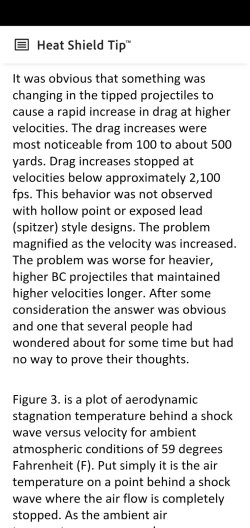MagnumManiac
Well-Known Member
Time has everything to do with heating something.
As I said early in the piece, lead does not melt inside the jacket, there simply isn't enough time for the heat to do so.
Look at it like passing your hand through a blow torch flame, do it quickly and you do not get burnt, hold it there….and well.
Lead cores are lubed, cores can slip, this is known. Jackets are thicker than .004", most grooves are this deep, if you section a bullet that has been fired, the rifling is not evident on the inside of the jacket, it doesn't displace enough material.
If you have ever used a roller to put cannelures on bullets, you will know just how much displacement is required to make the groove deep enough, it is on the order of .050-.060" deep and locks the core in place 90% of the time.
Anyway, bullets get hot, but not enough to melt the core while travelling down the barrel or through the air. They get far hotter after expanding in a medium, no matter what that medium is.
Cheers.
As I said early in the piece, lead does not melt inside the jacket, there simply isn't enough time for the heat to do so.
Look at it like passing your hand through a blow torch flame, do it quickly and you do not get burnt, hold it there….and well.
Lead cores are lubed, cores can slip, this is known. Jackets are thicker than .004", most grooves are this deep, if you section a bullet that has been fired, the rifling is not evident on the inside of the jacket, it doesn't displace enough material.
If you have ever used a roller to put cannelures on bullets, you will know just how much displacement is required to make the groove deep enough, it is on the order of .050-.060" deep and locks the core in place 90% of the time.
Anyway, bullets get hot, but not enough to melt the core while travelling down the barrel or through the air. They get far hotter after expanding in a medium, no matter what that medium is.
Cheers.

